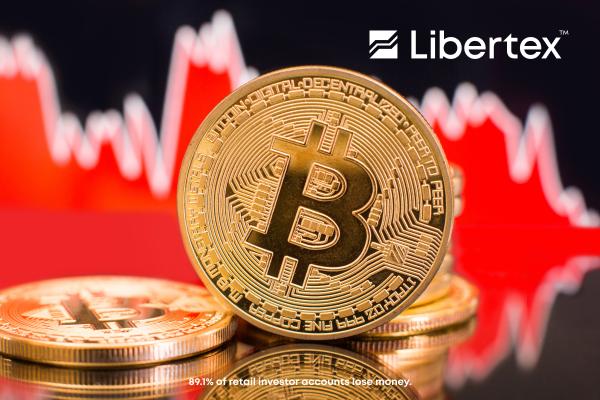After the dizzying heights of the post-pandemic crypto boom, 2022 was a particularly poor year for digital currencies. From a November 2021 high of $64,400, Bitcoin had dropped all the way to below $17,000 by the end of the following year as some investors racked up losses of over 70%. But then something unexpected happened. By mid-April 2023, the original cryptocurrency had gained almost 100%, breaking through the key psychological resistance of $30,000.
Many have attributed this phoenix-like resurgence to the financial turmoil and uncertainty that has ruled the market of late. First, we had the FTX scandal, then the collapse of Signature and SVB, and it looked like the embattled First Republic Bank would be the next domino to fall. However, after regulators took possession of the bank, JPMorgan Chase stepped in to assume the majority of its deposits and assets, putting an end to the months-long saga and promising stability for the future. This was much to Bitcoin's chagrin, which immediately responded with a 4.2% decline on Monday (01/05/2023). But what is behind Bitcoin's new-found correlation with volatility, and what does the wider economic context predict for BTC during the rest of 2023?
Digital gold…or something like that
Ever since Bitcoin emerged, its fans have tried to cast it as a new alternative to the historic yellow metal. Well, it is limited in supply and impossible to forge, but until recently, that's where the similarities ended. Bitcoin's immense volatility and correlation with higher-risk assets had always ruled it out as a store of value or inflation hedge. However, since the post-pandemic influx of institutional capital, things appear to be changing. Yes, BTC lost around 70% of its value over the course of 2022, but so too did many major tech stocks like Shopify and Square.
Since January 2023, however, it has outperformed virtually every other instrument — a fact that can only be attributed to its appeal as a long-term store of value, which investors believe has an intrinsic value above the local lows of late 2022. As central banks struggle to combat inflation and preserve national economies, the fate of the entire fiat system hangs in the balance. Some have suggested that a return to a gold or even Bitcoin standard will ultimately be required. Whatever happens, the data are clear that younger generations prefer digital currencies to precious metals, and so it is entirely feasible that Bitcoin could replace gold as the go-to hedge. For this to happen, Bitcoin would need to increase in value above $100,000, which some have predicted could happen by year-end.
Mine the gap
Any discussion of Bitcoin's intrinsic value and, thus, potential future price action wouldn't be complete without an overview of the situation in the mining market. The previous year of pain for BTC was accompanied by an unusual phenomenon: mining difficulty and cost increased exponentially at a time when prices were in freefall. As a result, Hashrate Index and Luxor now estimate that it costs miners at least $17,000 to produce one BTC in the United States, which is significantly more than the $5,000-10,000 it cost one year ago when prices were almost double their current level.
The reason for this increase in difficulty and cost is complex, but one obvious contributing factor has been the massive energy inflation we've seen. There is a general consensus that electricity prices will fall in the second half of the year, with the US Energy Information Administration predicting declines in both price per kWh and overall demand. This will, in turn, allow mining companies to increase their margins, but we would nevertheless expect BTC to remain well above its intrinsic cost. However, mining difficulty will also depend on technological upgrades and capacity increases by major miners, and any significant increase here will also have the potential to drive Bitcoin's price up.
FED up with inflation
The final and by no means least important factor will be central bank policy in the wider economic context, with the US Federal Reserve taking the leading role as usual. As the US regulator remains between a metaphorical rock and a hard place amid pressure to contain inflation and the need to support a precarious financial system, something will eventually have to give, and this will necessarily lead either to a flight to safety or a return to risk.
The question, however, is which category does Bitcoin now fit into in an ever-changing economic landscape, and is crypto even correlated with anything anymore? Conventional wisdom would suggest that if the Fed continues with its stated aim of additional rate hikes, this should lead to a decreased appetite for high-risk options like Bitcoin. However, it could well have the opposite effect since recent experience has shown that BTC is now viewed as a desirable hard asset to hold in times of economic uncertainty. If, however, the regulator is forced to return to stimulus mode, the historical data would indicate that Bitcoin could rise in lockstep with stocks as has previously been the case.
It would seem that we're at a crypto crossroads of sorts, and 2023 may well prove a seminal moment for Bitcoin and digital currencies at large as this fledgling-no-more asset class sheds its earlier correlations and begins to shape its own unique hybrid profile as both a store of wealth and speculative instrument.
Trade crypto with Libertex
Whatever the situation is in the cryptocurrency market, there's always a way you can participate with Libertex. We offer both long and short CFD positions on over 100 digital currency pairs, including Bitcoin (BTC), Ethereum (ETH), Solana (SOL), Avalanche (AVAX) and more. With leveraged trading, ultra-tight spreads and some of the most competitive rates of commission around, Libertex gives you unbridled access to the cryptocurrency market with all the convenience and accessibility of traditional trading. For more information or to start trading crypto with us today libertex.com
Risk Warning: CFDs are complex instruments and come with a high risk of losing money rapidly due to leverage. 85.9% of retail investor accounts lose money when trading CFDs with this provider. Tight spreads apply. Please check our spreads on the platform. You should consider whether you understand how CFDs work and whether you can afford to take the high risk of losing your money.


